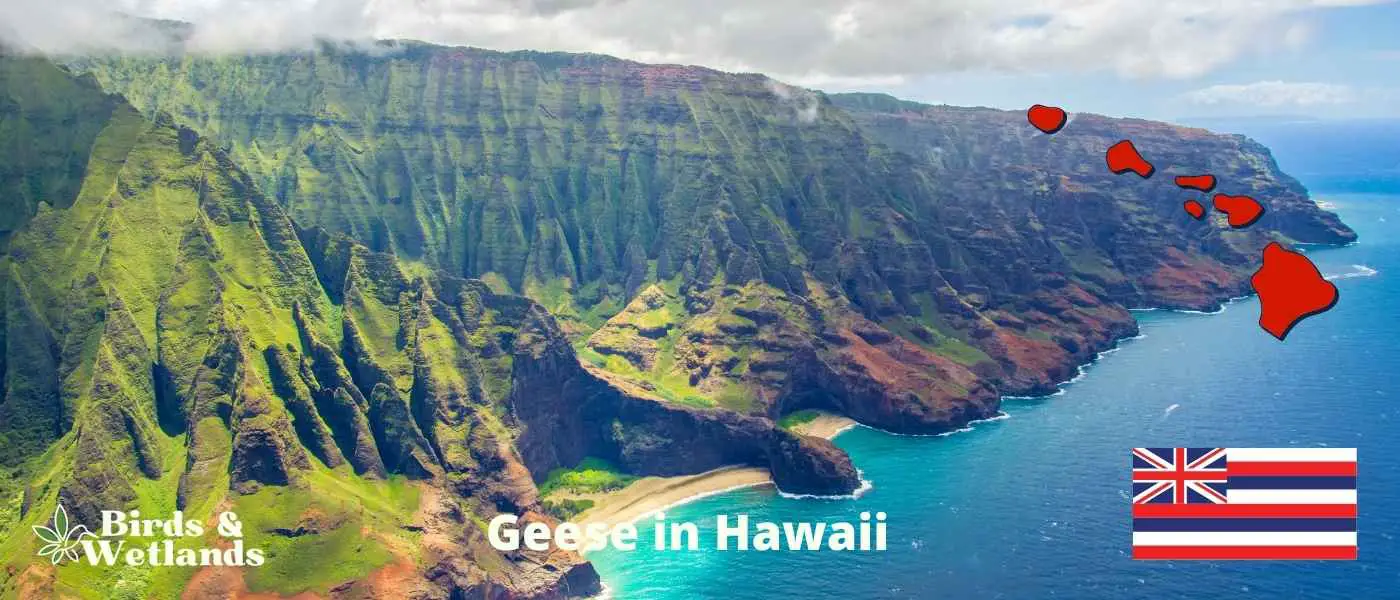If you’re from Hawaii, you know there are different types of geese that live here.
And if you visit one of the nature reserves or parks, you’ll see just how many geese call Hawaii home.
But what do we know about these birds?
Let’s take a closer look at some of the different types of geese in the state of Hawaii.
What Geese Are in Hawaii?
There are seven types of geese in the state of Hawaii.
- Canada Goose
- Snow Goose
- Cackling Goose
- Greater White-Fronted Goose
- Emperor Goose
- Brant
- Nene or Hawaiian Goose
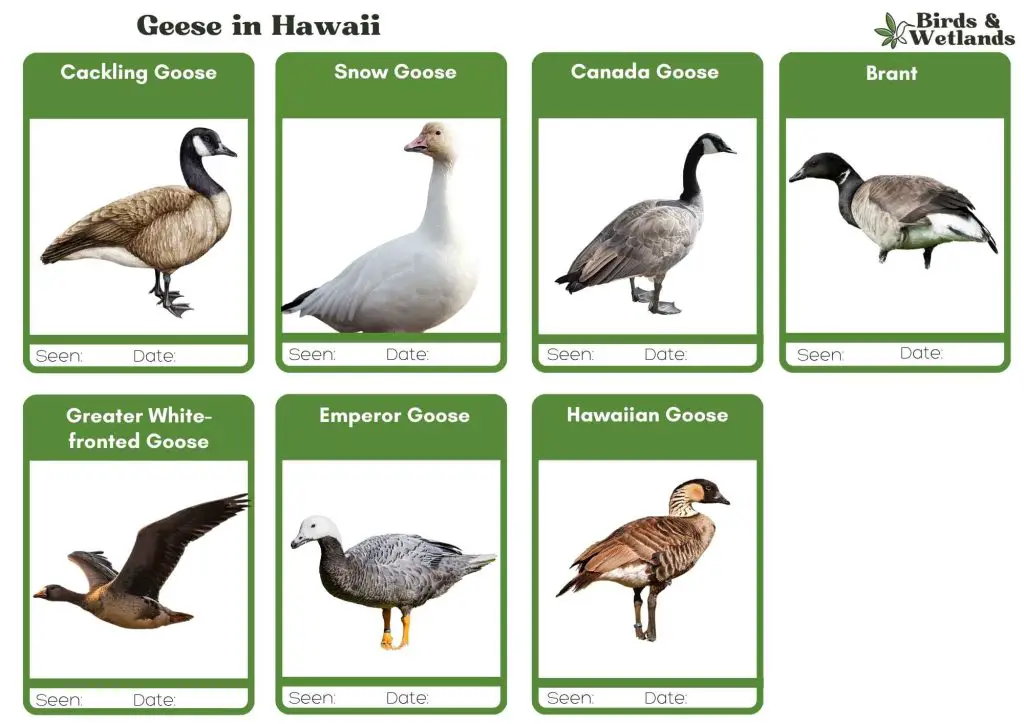
Canada Goose
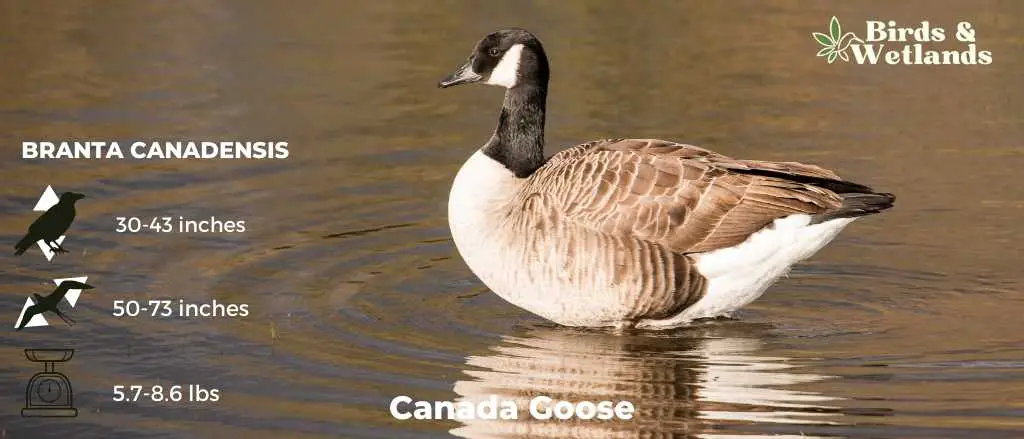
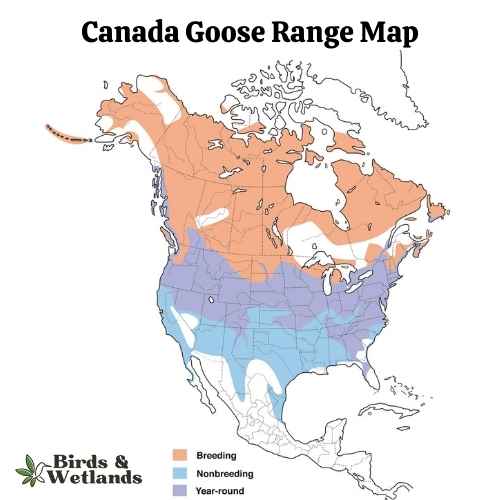
Canada Goose Sound
Scientific Name: Branta canadensis
Length: 30 to 43 in
Wingspan: 50–73 in
Weight: 5.7–14.3 lb
The Canada Goose is a large, well-known species of waterfowl noted for its distinctive appearance, familiar “honk,” and migratory behavior.
Appearance: Both male and female Canada Geese have a similar appearance, featuring a black head and neck with distinctive white patches on the cheeks and chin. The body is primarily brown with a lighter, often white, underbelly.
Diet: Canada Geese primarily feed on plant matter, including grasses, aquatic vegetation, and grains. They can often be seen grazing in parks, lawns, and fields, as well as dabbling in water bodies.
Reproduction: Canada Geese typically nest on the ground near water bodies, often on islands or other isolated areas to avoid predators. The female lays a clutch of about 4 to 6 eggs, which she incubates alone for around a month.
Snow Goose
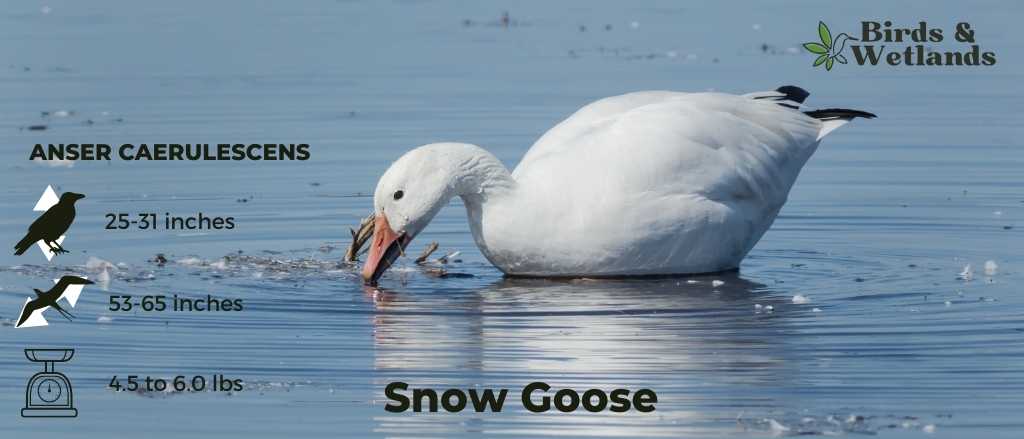
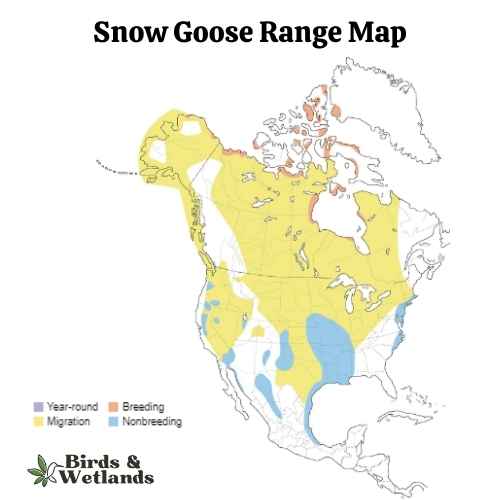
Snow Goose Sound
Scientific Name: Anser caerulescens
Length: 25 to 31 in
Wingspan: 53 to 65 in
Weight: 4.5 to 6.0
The Snow Goose is a large species of waterfowl known for its vibrant white plumage and significant migratory flights.
Appearance: True to their name, Snow Geese are predominantly white with black wingtips. They also have a pink bill, pink legs and feet. A color morph, known as the “Blue Goose,” displays a bluish-gray body with a white head, but is considered the same species.
Diet: Snow Geese primarily feed on plant matter, such as grasses, sedges, and small grains. They can often be seen in large flocks foraging in fields and marshes, and during migration and winter, they can cause considerable damage to agricultural fields due to their feeding habits.
Reproduction: Snow Geese typically nest on the tundra, near water bodies. The female builds the nest and lays a clutch of about 3 to 5 eggs, which she incubates alone for approximately three weeks. Once hatched, the goslings can feed themselves but stay with their parents for protection until they can fly.
Cackling Goose
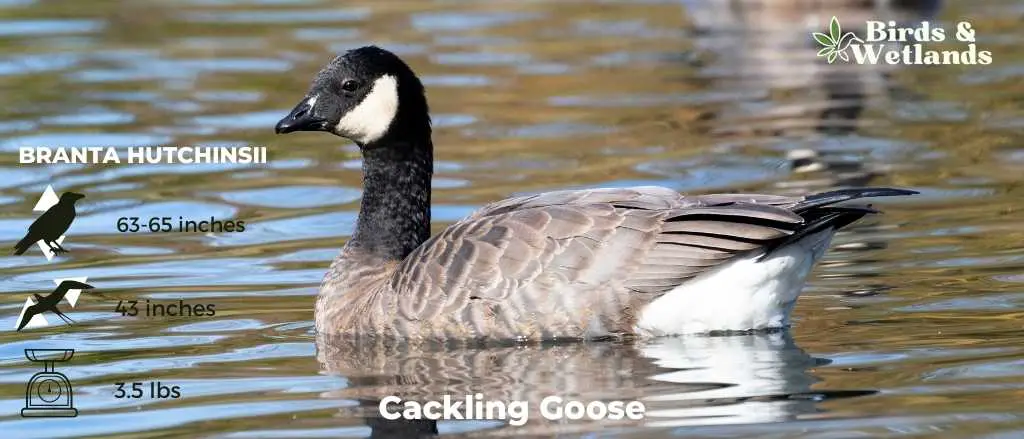
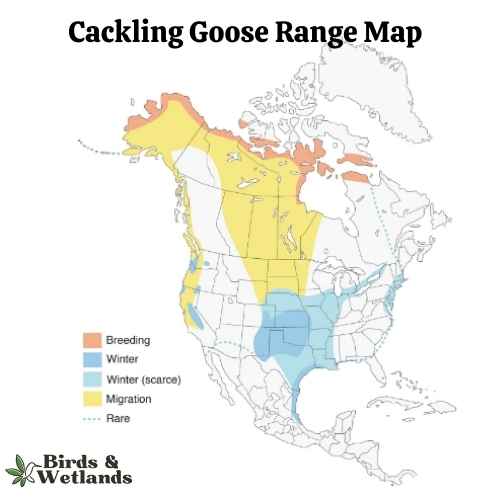
Listen
Scientific Name: Branta hutchinsii
Length: 24.8–25.6 in
Wingspan: 43-45.7 in
Weight:3.5 lbs
Cackling Geese are particularly known for their high-pitched, cackling calls, which is the source of their name. Despite their small size, these geese are renowned long-distance migrants, with some populations traveling thousands of miles between breeding and wintering grounds.
Appearance: With a similar color pattern to the larger Canada Goose, the Cackling Goose features a black head and neck, white chinstrap, light tan to cream chest, and brownish-grey body. One defining characteristic is its noticeably smaller size and stubbier neck compared to its larger counterparts.
Diet: Like many geese, the Cackling Goose’s diet mainly consists of plant matter. This includes grasses, seeds, and aquatic vegetation. They are often seen grazing on land or dabbling in shallow water.
Reproduction: Cackling Geese usually nest on the ground in elevated areas near water bodies, such as riverbanks or lakeshores. The female lays a clutch of 2 to 8 eggs and is responsible for incubation, while the male stands guard nearby. Incubation lasts for about a month.
Greater White-fronted Goose
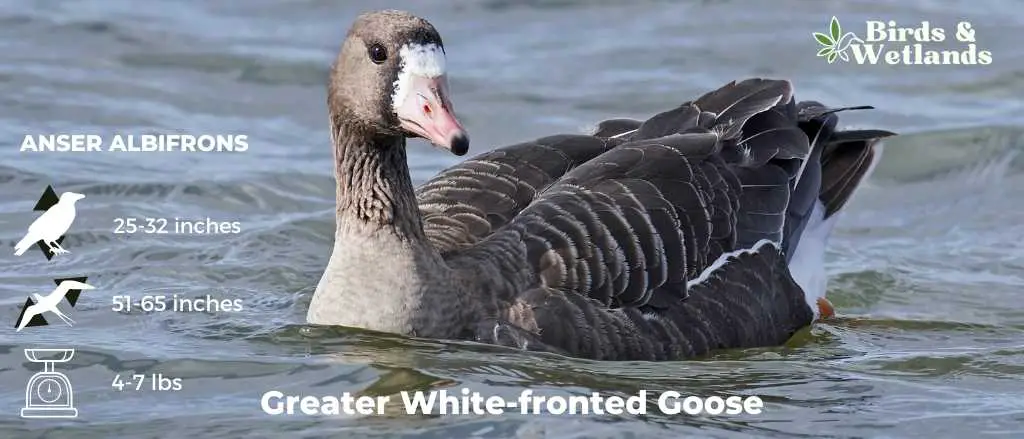
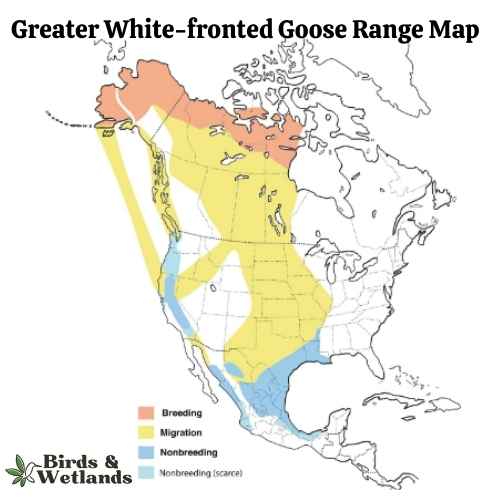
Listen
Scientific Name: Anser albifrons
Length: 25 to 31 in
Wingspan: 53 to 66 in
Weight: 3.3 to 6.6
The Greater White-fronted Goose is a medium to large waterfowl species, widely distributed across the Northern Hemisphere, particularly in North America.
Appearance: As the name suggests, these geese display a prominent white patch at the base of their bill. Their bodies are gray-brown, and their breasts are often marked with dark blotches. They possess a pinkish bill and orange legs and feet.
Diet: The Greater White-fronted Goose is a herbivore and feeds mainly on plant material. Its diet consists of grasses, sedges, grains, and berries. When wintering, these geese can often be found in agricultural fields, feasting on leftover grains and crops.
Reproduction: This species nests on the ground, often in areas with good visibility such as slopes or ridges. The female lays a clutch of 4 to 5 eggs, which she incubates for nearly a month. Once hatched, the young ones are taken care of by both parents until they are able to fly.
Emperor Goose
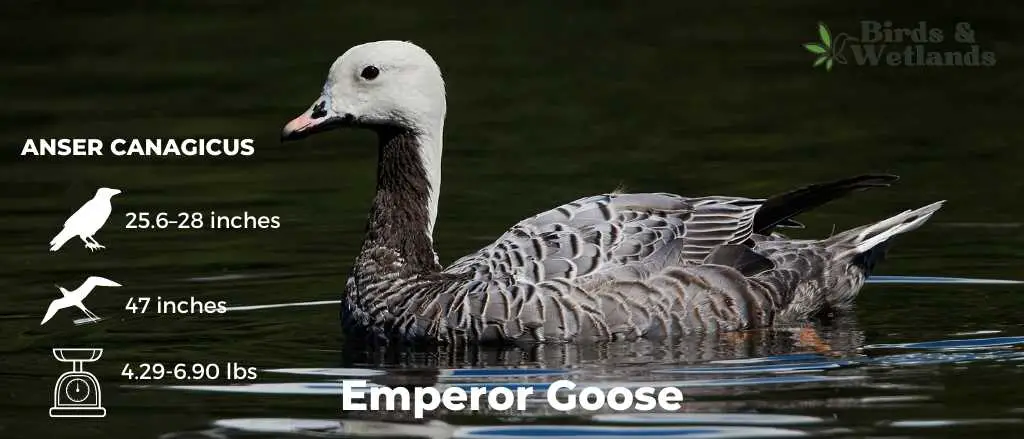
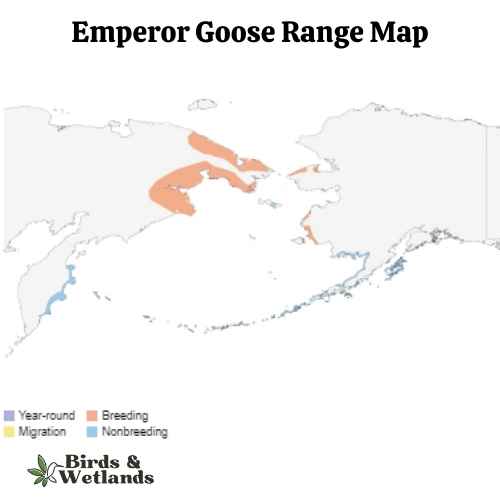
Listen:
Scientific Name: Anser canagicus
Length: 26–28 inches
Wingspan: 47 in
Weight: 4.29 lb
The Emperor Goose, also known as the beach goose or the painted goose, is one of the rarest geese in North America, and one that every birdwatcher hopes to see. This small and stocky goose is only found in Alaska. They are large birds with a wingspan of up to 4 feet and feed on the small plants in the mud at the edges of lakes and rivers, as well as roots and seeds.
The plumage is overall silvery gray, with a black and white margins making it look scaled. With a white head (which can become rust colored in the summer months), it has a black throat and its bill is small and pinkk, and the legs are orange. The sexes are similar, but juveniles have a duller plumage being gray all over.
Emperor geese need large tracts of land with patchy vegetation, water, and ample food to survive. Emperor geese use their bills to catch fish (and occasionally small mammals) while swimming in the water or flying over it. They thrive in wetland habitats because they provide the birds with food and protection from predators such as bears and wolves.
Female emperor geese lay 3-8 eggs per season in a nest made from grasses and plant material. She does the majority of incubation of the eggs, which take about 30 days to hatch.
Brant
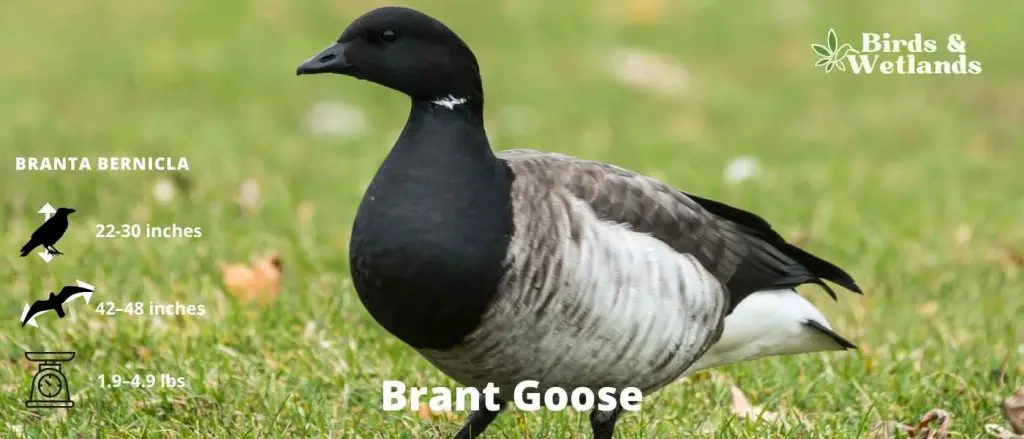
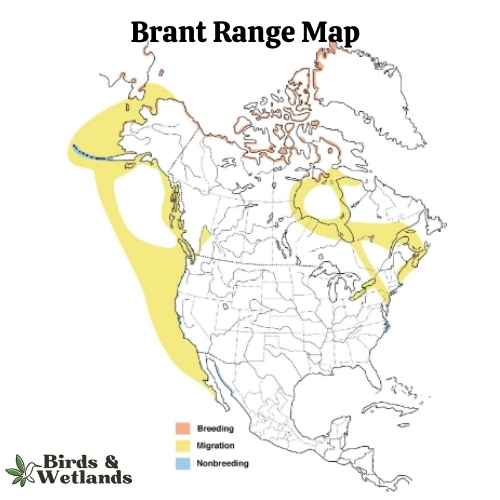
Listen
Scientific Name: Branta bernicla
Length: 22–26 in
Wingspan: 42–48 in
Weight: 1.9–4.9 lb
The Brant is a compact species of goose that is known for its striking appearance and interesting migratory patterns.
Appearance: The Brant is recognized for its dark, sooty color with a white crescent on the neck. The body is mostly black to dark gray, contrasting with the lighter underparts. Its small size, as compared to other geese, and short, stubby bill are other distinct features.
Diet: The Brant’s diet primarily consists of aquatic plants, especially eelgrass and sea lettuce. During the breeding season, they may also feed on grasses, sedges, and insects.
Reproduction: Brants typically breed in the high Arctic tundra. The female lays a clutch of 3 to 5 eggs in a ground nest, which she incubates for about a month.
Notably, Brants make an impressive long-distance migration every year. They spend their winters along both the east and west coasts of the United States and travel to the Arctic regions of Canada, Alaska, and even Russia to breed.
Hawaiian Goose (Branta sandvicensis)
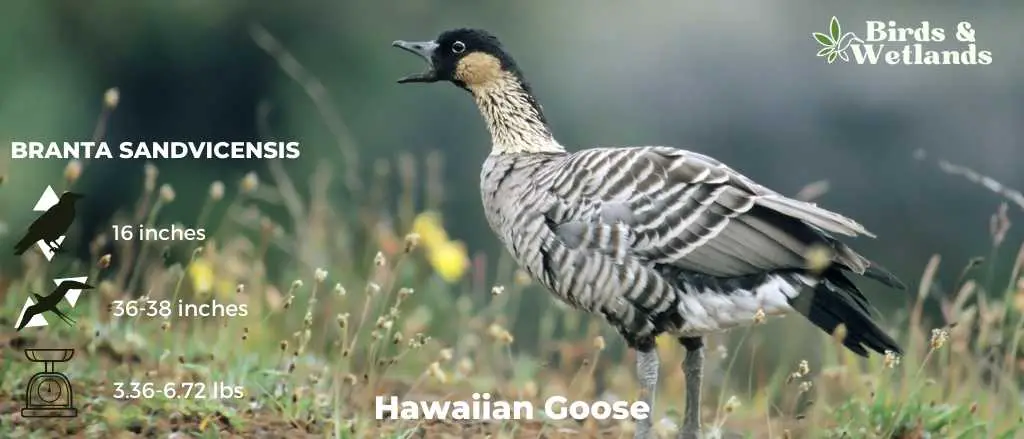
The Hawaiian Goose is a unique bird that lives in Hawaii, and it’s one of the most sought-after species by birdwatchers. They can fly up to 55 miles per hour (88 kilometers per hour).
- Scientific Name: Branta sandvicensis
- Height: 41 cm (16 in)
- Wingspan: 36-38 inches
- Weight: Males: 1.695–3.05 kg (3.74–6.72 lb) / Female: 1.525–2.56 kg (3.36–5.64 lb)
Hawaiian Goose Description
The Hawaiian Goose has a reddish-brown hue on its head and neck, with white flanks and belly. Its wings are black with white outer edges, and its legs are long and pink. The bill of the Hawaiian goose is light grey, with a white tip on the upper mandible.
Hawaiian Goose Sound
Listen to Hawaiian Goose
Hawaiian Goose Habitat & Range
The habitat for the Hawaiian Goose includes grasslands and wetlands, coastal dunes, lava plains, and related anthropogenic habitats such as pasture as well as open clearings in forests near bodies of water on the Hawaiian Islands of Kauai, Oahu, Molokai, Maui, and Hawaii.
This species tends to live near bodies of water because it relies on them for food and survival.
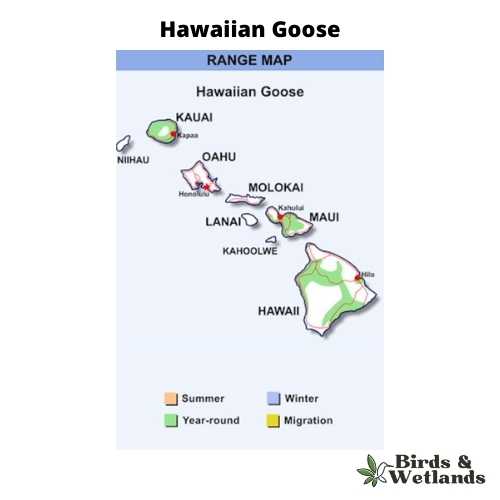
Hawaiian Goose Diet
The Hawaiian goose prefers grasses and other plants for feeding purposes. They also eat small insects such as ants, termites, beetles etc., when available in abundance during certain seasons like summer months. They have been seen to form large flocks when there is plenty of food available, but they will split into smaller groups when conditions are not favorable for feeding.
Hawaiian Goose Nesting
These geese usually live in pairs or small groups, but they may gather together with other species of birds during mating season or to care for their offspring. They build their nests on the ground near water sources like ponds or streams.
The Hawaiian Goose is endemic to Hawaii and has been endangered since 1967, according to the International Union for Conservation of Nature (IUCN). Its population was once around 100 birds in 1940 but has since dropped significantly due to habitat loss and the introduction of non-native species such as mongooses and rats into their natural habitat.
Are There Any Resident Flocks of Geese In Hawaii?
The nene or Hawaiian goose is closely related to the giant Canada goose.
It is classified by both state and federal governments as endangered species and is the world’s rarest goose, with a population of a little over 2,000.
Formerly breeding of Hawaii’s state bird was done on all or most of the Hawaiian Islands but is currently restricted to Hawaii, Kauai, and Maui.
When Captain James cook first arrived in the Hawaiian Islands in 1778, the Hawaiian goose was quite common.
However, due to over-hunting, natural predators such as small Indian mongoose and feral cats that prey on young birds, habitat loss and severe ecosystem disturbances, the wild nene goose was on the brink of extinction with only 30 birds remaining in the wild.
Fortunately, thanks to conservation efforts, the nene goose population has rebounded and there are now more than 2,000 geese living in the wild.
The majority of nene live in Hawaii Volcanoes National Park on the Big Island of Hawaii. Hawaiian Geese are often seen grazing on the grasslands near the park’s visitor center.
While the nene population is still at risk, it is encouraging to see these magnificent birds making a comeback in Hawaii.
Geese Hunting in Hawaii
Geese can be found in many different habitats in the Hawaiian Archipelago.
While they are sometimes considered to be pests, they are also popular with birdwatchers and are often seen in parks and near waterways.
While there is no hunting season for geese in Hawaii, it is legal to hunt them with a permit from the state Department of Land and Natural Resources.
However, permits are only issued for control purposes and not for recreation.
Conclusion on Geese in the State of Hawaii
If you’re looking for an interesting bird to watch while on your trip to Hawaii, be sure to keep an eye out for one of the seven types of geese that call the Aloha state home.
The Nene or Hawaiian Goose is the rarest and most interesting of all the geese in Hawaii

